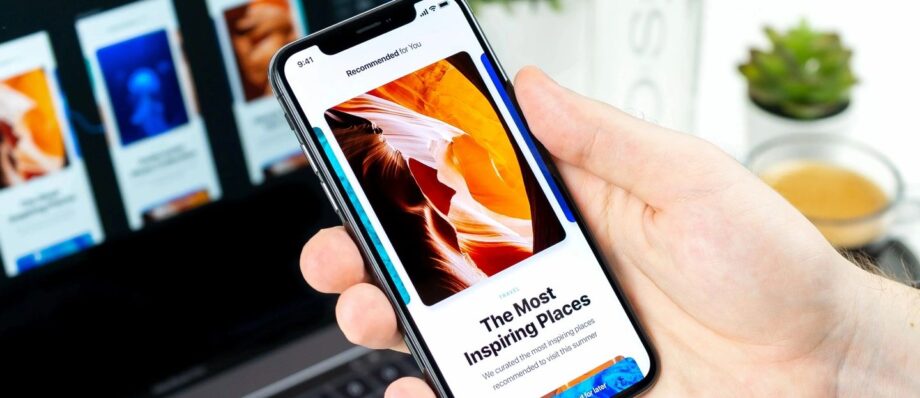HOW AUGMENTED REALITY IS SHAPING THE FUTURE OF DIGITAL MARKETING AND BRAND ENGAGEMENT
With the rise of innovative technologies, augmented reality (AR) has emerged as a powerful tool for digital marketers to engage consumers in creative and immersive ways. From interactive product displays to virtual try-ons, AR is revolutionizing the customer experience and opening new avenues for brands to connect with their audiences.
This blog will explore how augmented reality is reshaping digital marketing strategies, driving brand engagement, and enhancing user experiences, along with practical ways businesses can implement AR to stay ahead of the competition.
1. Enhanced Product Visualization
One of the most impactful uses of AR is in product visualization. It allows customers to see products in real-time, whether it’s placing a piece of furniture in their living room or trying on different shades of lipstick. This feature helps consumers make informed purchasing decisions, reducing uncertainty and boosting confidence in their choices. Brands like IKEA and Sephora have already adopted AR for virtual product trials, resulting in higher engagement and increased conversion rates.
2. Creating Immersive Brand Experiences
Augmented reality has the potential to transform traditional marketing into captivating experiences. For example, brands can create interactive AR games, virtual pop-up stores, or even AR-based scavenger hunts that engage customers on a deeper level. These experiences not only increase brand awareness but also encourage social sharing, making it an effective strategy for word-of-mouth marketing. By integrating AR into campaigns, businesses can deliver memorable experiences that stand out in a crowded market.
3. Virtual Try-Ons: A Game-Changer for Retail
AR has significantly changed the landscape of retail by allowing customers to try on clothing, accessories, or makeup virtually. This reduces the need for physical trials, making it easier for consumers to shop online. Whether it’s a fashion brand offering virtual fitting rooms or an eye wear company allowing customers to see how glasses look on their face, AR makes online shopping more convenient and enjoyable. This technology not only enhances the shopping experience but also minimizes returns, saving businesses time and resources.
4. Boosting Engagement with AR-Powered Advertising
AR is being leveraged in digital advertising to create more engaging and interactive ads. Instead of static banners or videos, brands can use AR to let users interact with the ad content. For instance, a car company could create an AR ad that allows users to explore the interior of a new model from their mobile device. This level of engagement goes beyond traditional ads, providing a personalized experience that leaves a lasting impression on the audience.
5. Revolutionizing Learning and Training
Beyond marketing, AR is also being used in education and corporate training. Companies are using AR to create immersive training modules that provide hands-on experience in a virtual environment. This approach makes learning more engaging and helps trainees retain information better. Similarly, businesses can use AR to conduct virtual onboarding sessions, product demonstrations, or safety training, reducing the need for physical resources and time.
6. AR in Animation: Bringing Characters to Life
Augmented reality is making waves in the animation industry by bringing characters and stories into the real world. Imagine a brand mascot that can appear in your living room, interact with users, and tell stories. This form of AR-based animation can be used for storytelling, interactive marketing campaigns, or even as a unique selling proposition in product promotions. As the technology advances, AR animations are likely to become a standard feature in creative marketing strategies.
7. Social Media Integration: Expanding AR’s Reach
Social media platforms like Instagram and Snapchat are already incorporating AR filters and lenses, making it easier for brands to engage with their audiences. Brands can create custom AR filters that users can play with and share, increasing visibility and engagement. This form of user-generated content amplifies brand reach and creates a buzz around campaigns. For example, a cosmetics brand might create an AR filter that lets users virtually try on new makeup looks and share their photos with followers.
8. Building Virtual Showrooms
AR is also being used to create virtual showrooms, allowing businesses to showcase their products in a digital space. Customers can explore different product categories, view items in 3D, and even interact with virtual sales representatives. This is particularly useful for industries like automotive, real estate, or luxury retail, where customers want a detailed view before making a purchase decision. Virtual showrooms offer a cost-effective solution for businesses to showcase their products globally without the need for physical space.
9. Driving Engagement with AR-Based Events
Brands are using AR to host interactive events and experiences, such as AR concerts, product launches, or promotional events. These events can be accessed from anywhere, making them inclusive and accessible to a global audience. For example, a fashion brand could host a virtual runway show where attendees use AR to view the outfits in 3D, examine the fabrics, and even see how the garments move. This immersive approach keeps audiences engaged and excited, even if they’re not physically present.
10. Measuring the Impact of AR on Consumer Behavior
With the rise of AR in marketing, businesses need to understand how it influences consumer behavior. AR analytics tools are now available to track user interactions, engagement rates, and conversion metrics in real-time. This data can provide valuable insights into what works and what doesn’t, enabling businesses to refine their AR strategies for maximum impact. By measuring the effectiveness of AR campaigns, companies can optimize their investments and ensure they’re delivering value to their customers.
Conclusion
Augmented reality is no longer just a futuristic concept; it’s a powerful tool that’s transforming how businesses engage with customers and showcase their products. By incorporating AR into digital marketing and creative strategies, brands can deliver unique experiences that captivate audiences, drive engagement, and ultimately, increase sales. As AR technology continues to evolve, businesses that embrace its potential will find themselves at the forefront of innovation, creating memorable and impactful marketing experiences for the modern consumer.




jackdaniel
September 28, 2024Informative Content